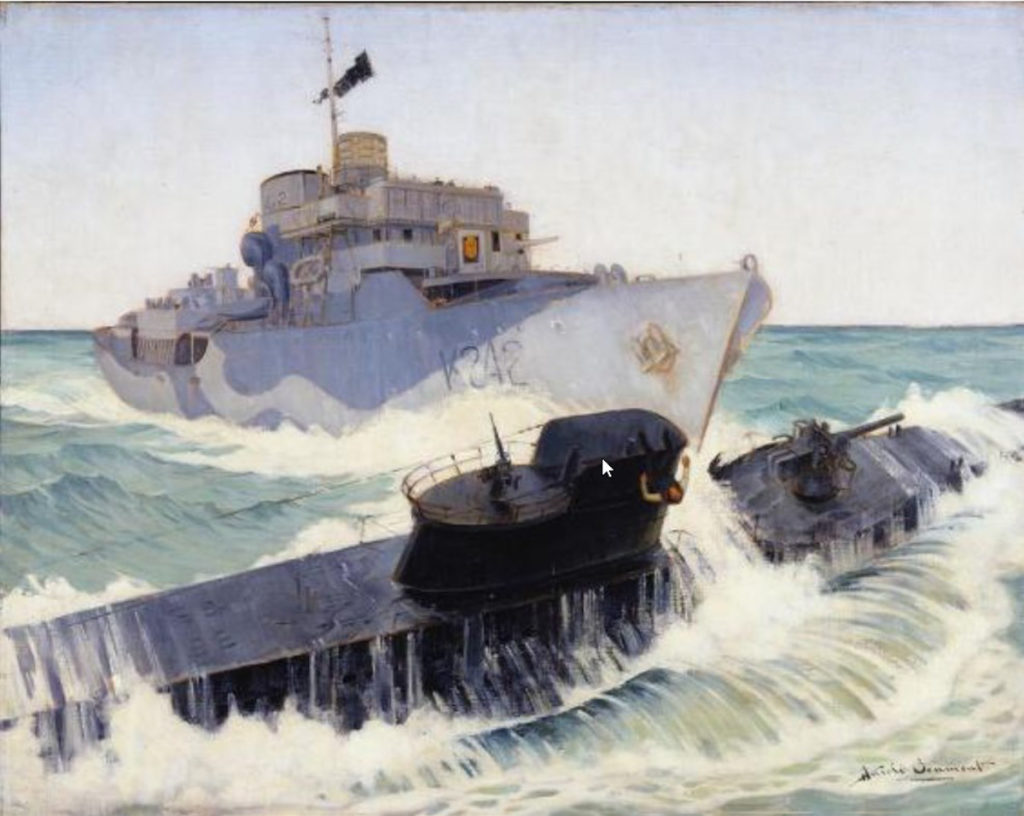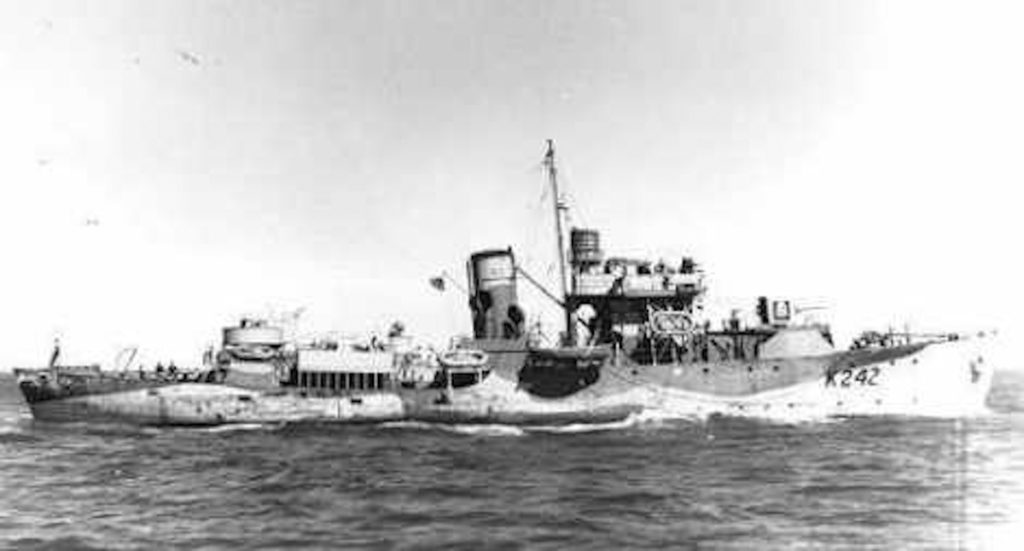This is the painting of war artist Harold Beament hanging in the Canadian War Museum and portrays the destruction on January 13, 1943, by the Canadian corvette HMCS Ville de Québec of German U-Boat (submarine) U-224.
Ville de Québec detected a submerged U-boat on its ASDIC (sonar) while helping to escort a convoy in the Mediterranean and promptly delivered an attack with depth charges that drove U-224 to the surface. The gunners of the Ville de Québec opened fire on the submarine, and it was then rammed by the corvette, knocking the one survivor of the U-Boat (pictured in the painting) from the conning tower into the water. U-224 sank quickly and its end was marked by an underwater explosion a minute later.
She was a revised Flower-class corvette of the Royal Canadian Navy that took part in convoy escort duties during the Second World War. Ville de Québec fought primarily in the Battle of the Atlantic. She was named for the city of Quebec, Quebec.
Ville de Québec was allocated for Operation Torch, the Allied invasion of North Africa, in September 1942. When crossing into the United Kingdom on 28 October 1942, she and HMCS Alberni picked up 81 survivors from the British whaling ship Sourabaya, which had been torpedoed and sunk in the North Atlantic the day before.
The ship was sold to commercial interests after the war and was in service until 1952.
Canadian War Museum
Located in Ottawa, Ontario, Canada, the Canadian War Museum is a national museum of the country’s military history. In addition to acting as a place of remembrance, the museum provides an educational centre for Canadian military history. In LeBreton Flats, the 440,000 square metres (4,700,000 sq ft) museum building is located south of the Ottawa River. In addition to a theatre, curatorial and conservation rooms, storage space, and a cafeteria, the museum houses a variety of exhibits and memorials. The building also contains the Research Centre for Military History, the library and the collections of the museum.








